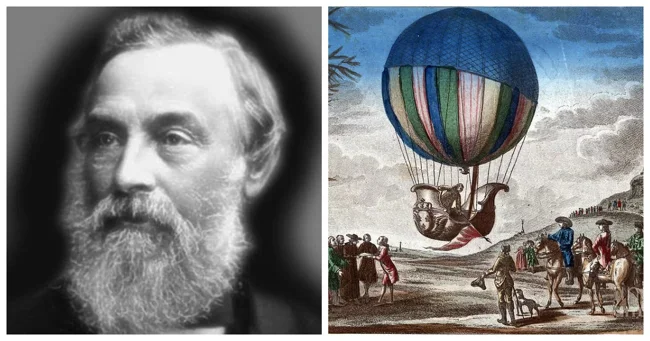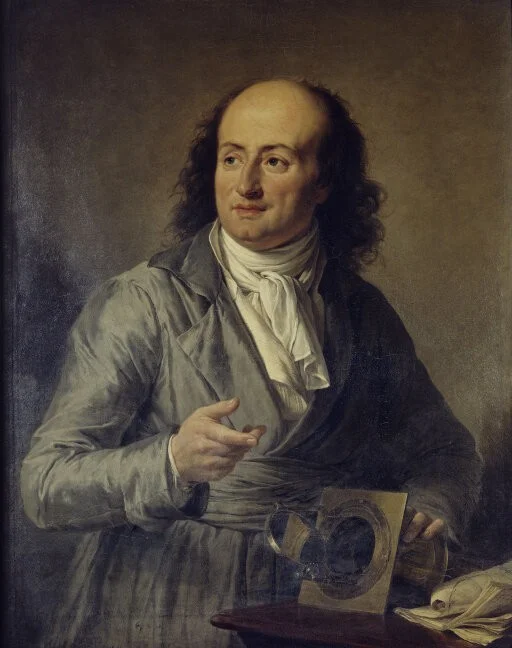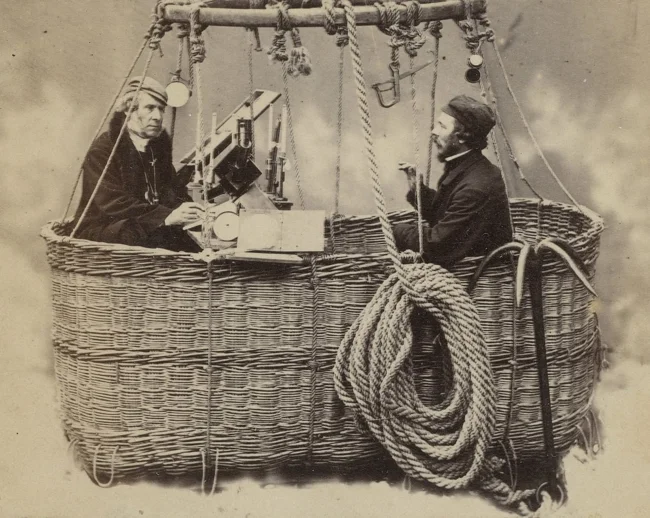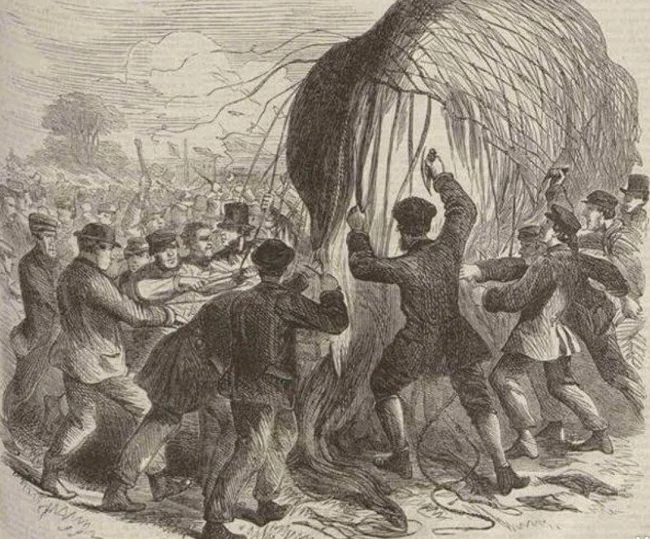The Leicester Air Riot of 1864 is one of the most paradoxical rebellions in history: who organized it and why? (7 photos)
The second half of the 18th century and much of the 19th century saw a significant surge in interest in ballooning around the world. This interest was sparked by the first flights of the Montgolfier brothers in 1783, followed by balloon trips organized by Jacques Alexandre César Charles. 
The trend quickly caught on in both France and England, attracting crowds of hundreds to thousands of eager spectators who eagerly flocked to the launches. In some cases, the enthusiasm was so great that riots were threatened if the launches were delayed. One such unfortunate incident occurred during a demonstration by British aeronaut Henry Tracy Coxwell. 
The Montgolfier brothers (1740–1810) and Jacques-Etienne (1745–1799) — inventors of the hot air balloon
Henry Tracy Coxwell was a pioneer of English aeronautics whose historic flight in 1862 with meteorologist James Glaisher made him famous. Coxwell and Glaisher ascended into the stratosphere in a hot air balloon, reaching an altitude of 10.6 kilometers. 
Jacques Alexandre Cesar Charles was a French inventor and scientist. He is known as the inventor of a balloon filled with hydrogen or another lighter-than-air gas.
In the thin atmosphere with a lack of oxygen, Glaisher lost consciousness, and Coxwell lost the feeling in his hands. When his hands became useless, Coxwell had to use his teeth to operate the valves that released the gas, allowing the balloon to descend to a safer altitude. 
Henry Tracy Coxwell
Two years later, Coxwell built a new balloon, which he called Britannia, and conducted preliminary tests at Crystal Palace and Derby before deciding to make a demonstration on 11 July 1864 at Victoria Park Racecourse, Leicester, during a festival organised by the Foresters' Society.
On the day of the flight, some 50,000 people gathered at the racecourse. During the preparations for the ascent, a rumour spread that the balloon being demonstrated was not Coxwell's newest and largest, but an older model. The crowd's mood turned sour, and some of them broke through the barrier and demanded that Coxwell take off immediately. 
James Glaisher
Coxwell announced that he would be taking about a dozen passengers on the flight, and was selling tickets to those who wanted to go on an air journey. All these passengers squeezed into the basket of the balloon. This further angered the crowd. In an attempt to quell the unrest, the police were forced to use batons, and one of the women in the crowd was injured. When she fell to the ground, bleeding, this caused even greater anger. 
James Glaisher (left) and Henry Tracy Coxwell take a hot air balloon ride in 1864
During the riot, one of the agitators threw a bottle into the balloon, damaging the envelope, while others violently tore down the protective netting. In response, Coxwell warned that if order was not restored and the crowd did not retreat, he would release the gas from the balloon. However, his warning was met with more abuse, prompting Coxwell to carry out his threat. As the balloon deflated, the crowd rushed forward and tore it to pieces. They then set fire to the basket, reducing it to ashes. Coxwell himself was attacked and stripped of his clothes. He fled and hid in a citizen's house to escape the angry crowd.
Coxwell blamed the Leicester police for the riots, saying they had not provided enough police. The London Review of Politics, Society, Literature, Art, and Science described the crowd as "a horde of savages, as fierce and untamed as the South Sea Islanders, and differing little from them except in their habitation, which was Leicester." 
Picture of the riot from the illustrated newspaper "Penny"
"It is humiliating to think," the author continued, "that after all the civilizing influences that have been brought to bear upon them, there still remains so much of the savage in the blood of our working classes."
Leicester residents blamed the riots on the newcomers. The satirical magazine Punch called Leicester residents "balloonists", a sarcastic description that lasted for quite some time before the story faded and was replaced by new ones.
























